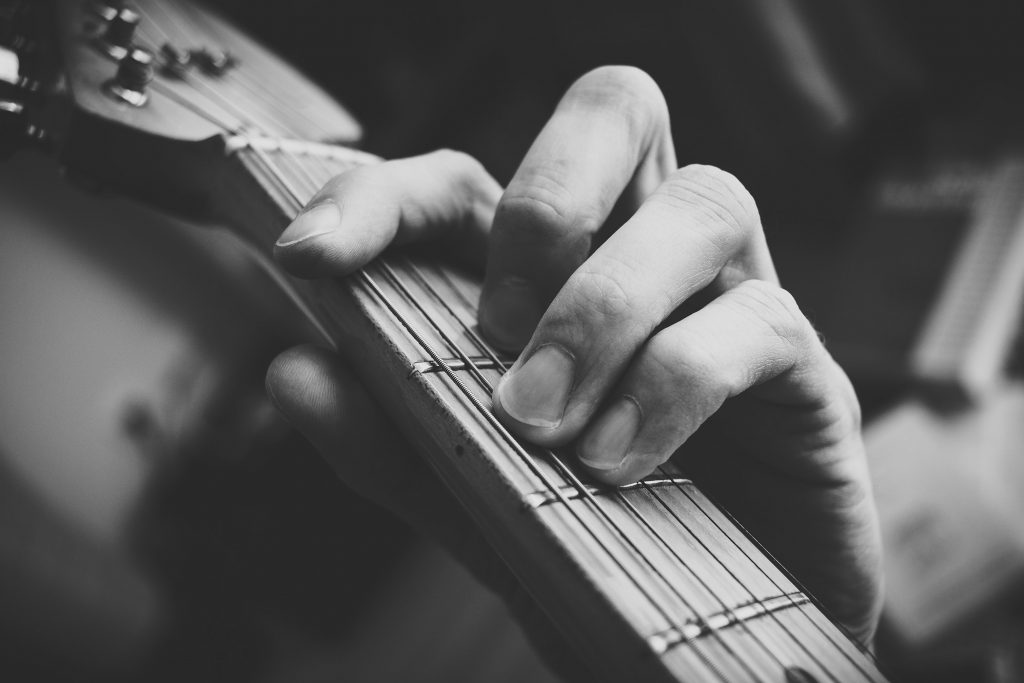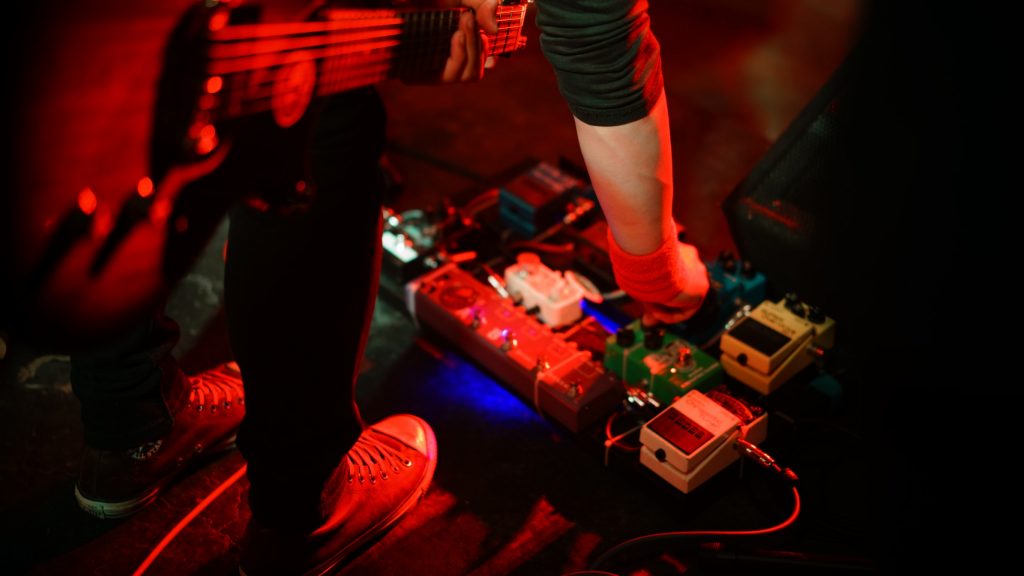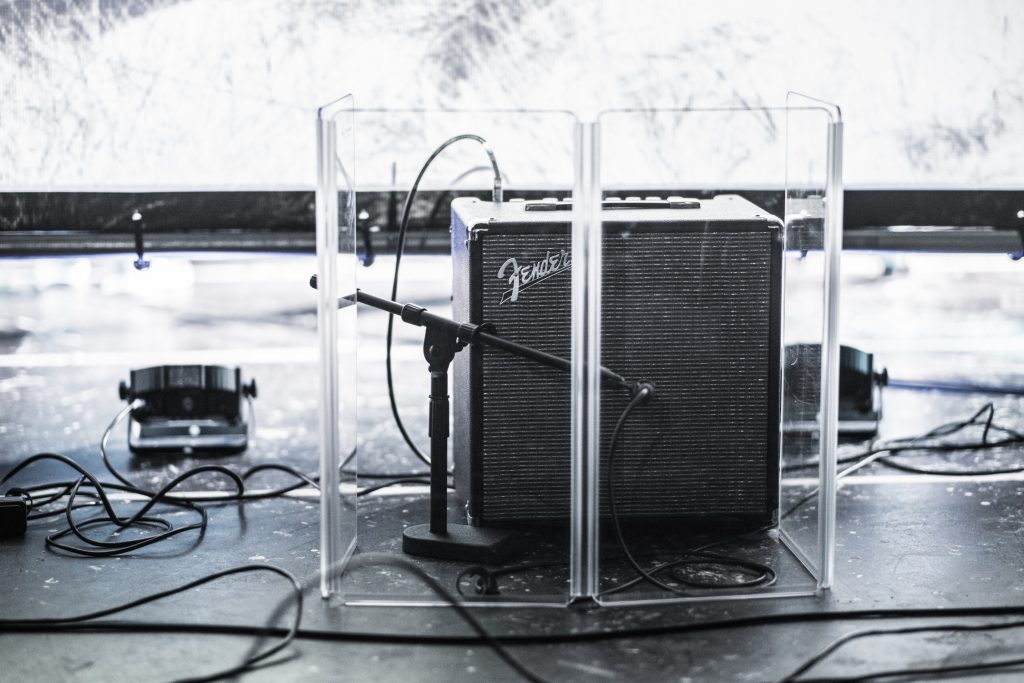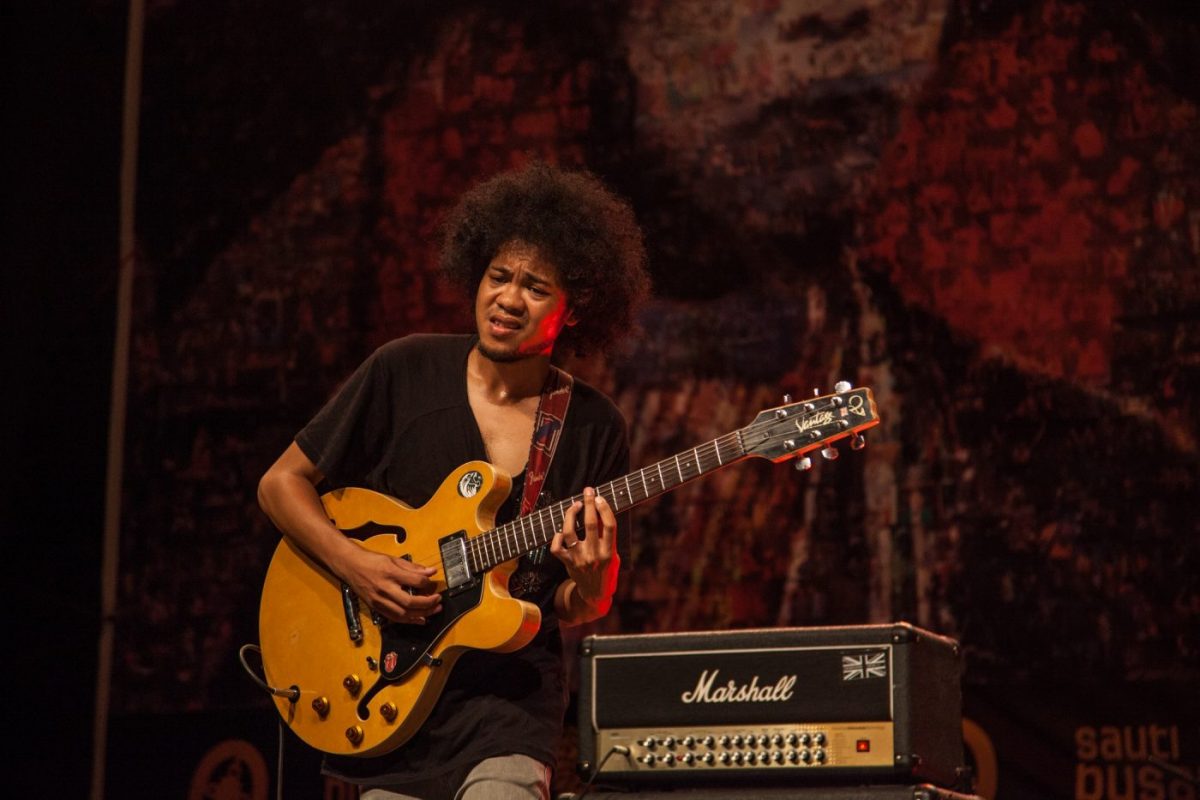“Tone” is every guitarists’ favorite four-letter word. We all have this idea of how we want our instrument to sound and we all chase it.
Quite often, we spend oodles of money and effort in pursuit of this perfect guitar tone in our heads, switching and trading guitars, amps, pedals, cables, and even batteries until we’ve driven ourselves to the edge of a nervous breakdown obsessing over tiny details in our gear.
This article is not about that process. If you find yourself seriously thinking that the only thing standing between you, the tone of the gods, and global acclaim is the type of nine-volt battery in your tuner, please consult a mental health professional immediately.
This article is about getting the best guitar tone without breaking the bank or driving yourself crazy. It is absolutely not necessary to spend huge piles of cash to get cool tones.
Like so many aspects of this thing of ours, what you have is less important than what you do with it. Knowledge, skill, and patience will always win out over blindly throwing money around to duplicate some famous rig. It’s the human element that makes the most difference. Here are some actual tone tips in no particular order:
Practice More and Practice Better

Every sound your gear makes begins with your hands and ears. A novice guitarist needs to get their basic skills together in order to make any piece of equipment sound good. It’s very easy to make an electric guitar sound bad and no piece of pricey kit will cover up for not being able to control your ax.
If you are in the first few years of your guitar experience, you’re much better off investing yourself into your playing and practicing rather than new gear. Work on smoothing out your hands, improving time and feel, and making a better connection with the strings. This strategy will carry you farther than buying stuff ever will.
One of the big secrets of playing guitar is that every piece of gear is pretty cool once you can actually play it.
Spend Money in the Right Places!

It’s easy to get overwhelmed by all the gear available these days and even easier to get seduced by those beautiful high-end guitars on the wall in your local shop. It’s important to take a step back and realize that a pretty instrument isn’t going to make your guitar tone any better.
Once you get above $2000 dollars or so, you’re mostly paying for flamier tops, ornamentation, status, and brand prestige. In reality, a $500 guitar with a good setup and decent pickups will do all of the same things those pricey ones will.
Amps are a different story. Most guitars are pretty simple contraptions; most amps are not. You will get closer to achieving the best guitar tone by spending your hard earned money on a better amp rather than a flashier guitar.
A cheap, low-end amp will always sound like what it is. A mid-level to higher-end amp will start you off in a nicer place automatically and you’ll be one step closer to a much better guitar tone.
A lot of people forget that your amp is an instrument too. The folks working in your friendly neighborhood guitar shop know that the best way to sell a $200 guitar is to plug it into a $2000 amp. Use this knowledge to put your cash where it will do the most good.
Learn to Use the Gear You Have

Ever notice that some players can make any rig sound good and that others can make a ‘59 Les Paul and a vintage Marshall sound like a cordless drill run through a window air conditioner?
This is because some guitarists learn how to use gear to its fullest while those others just plug in and hope for the best, which usually doesn’t happen. Taking the time to experiment with your gear and learning where the sounds live are absolutely crucial.
Go through each knob and control in your setup and listen to what it does. Play. Turn one knob up by one number. Play again and listen. Keep going. This might seem tedious but you’ve got to do it, especially if you’re not already deeply experienced in guitar gear. If you are, you’ve already done it. Once you’ve wrung out your own rig this way, do it with every other piece of gear you can get your hands on. The perfect guitar tone is not just one knob, button or control.
After a while, you’ll get a general feel for what usually does what and will able to quickly dial in righteous tones out of anything.
Keep the Same Rig Long Enough and Your Tone Will Emerge
This goes along with the point above about learning to use what you have.
I spent 20 years of my life teaching and working in guitar shops and saw many players get caught in the cycle of buying and quickly selling many guitars and amps in the pursuit of the elusive guitar tone in their ears. This practice isn’t limited to beginners, either. I’ve seen accomplished players do it too. Do it enough and you won’t even be able to tell what you’re hearing anymore.
It’s a much better idea to live with that new amp for a bit, see what it does, and what you can get out of it. Gig it, record it, rehearse with it. Unless you bought a piece of junk, great tones are in there somewhere. Audio memory is largely imagination and trying to remember what the last three amps you bought and sold this month sounded like while playing the fourth is a quick path to that nervous breakdown mentioned earlier.
Keep at any one of the four for enough time and your perfect guitar tone will begin to emerge.
Don’t Get Hung Up on Settings

Your ears are different every day and your gear sounds differently in every new place you set it up. Therefore, adjust your settings as needed for each day and new venue rather than just always blindly putting the Treble knob on 7.
Playing inside sounds one way and playing outside another. The same is true for hollow vs solid stages, carpeted rooms vs wood floors, and a bunch of other variables. Don’t fall into the trap of always doing everything the same way. Do your best to always listen with fresh ears and trust your judgment.
I hope you enjoyed this lesson on how to get great guitar tone without overspending and that you learned something from it. See you next time!


So many people spend so much time focusing on their instrument instead of themselves. You shouldn’t be chasing a perfect guitar tone… what you should be chasing is becoming the best guitarist you can be. With more repetition and practice you’ll find that your instrument will become an extension of your thoughts.